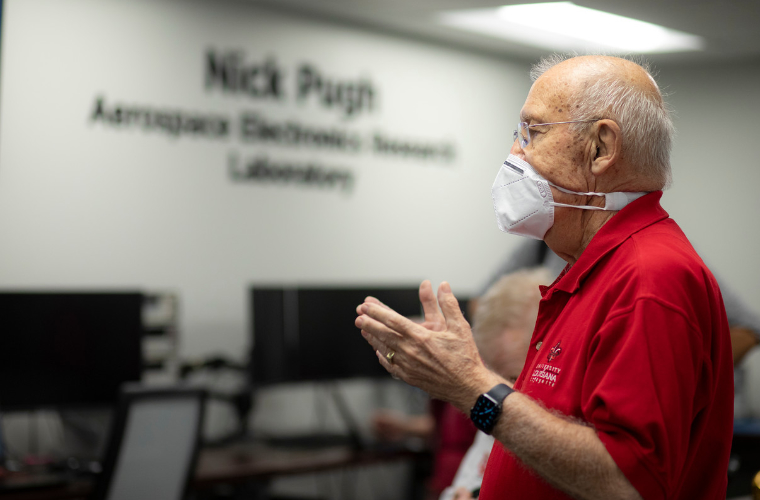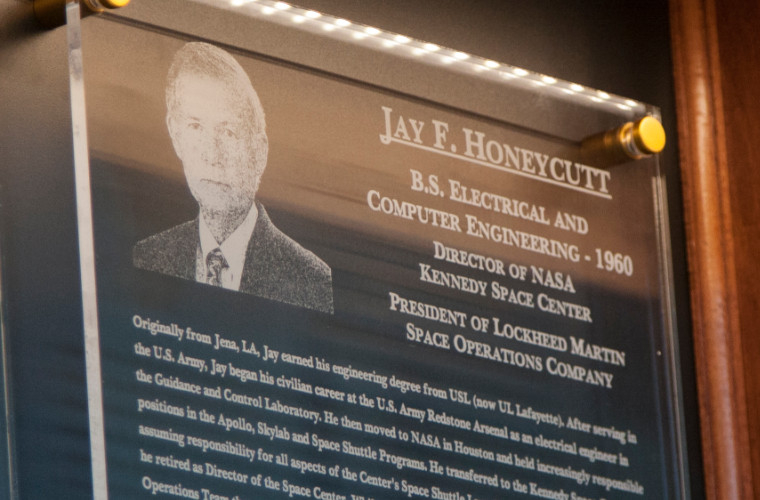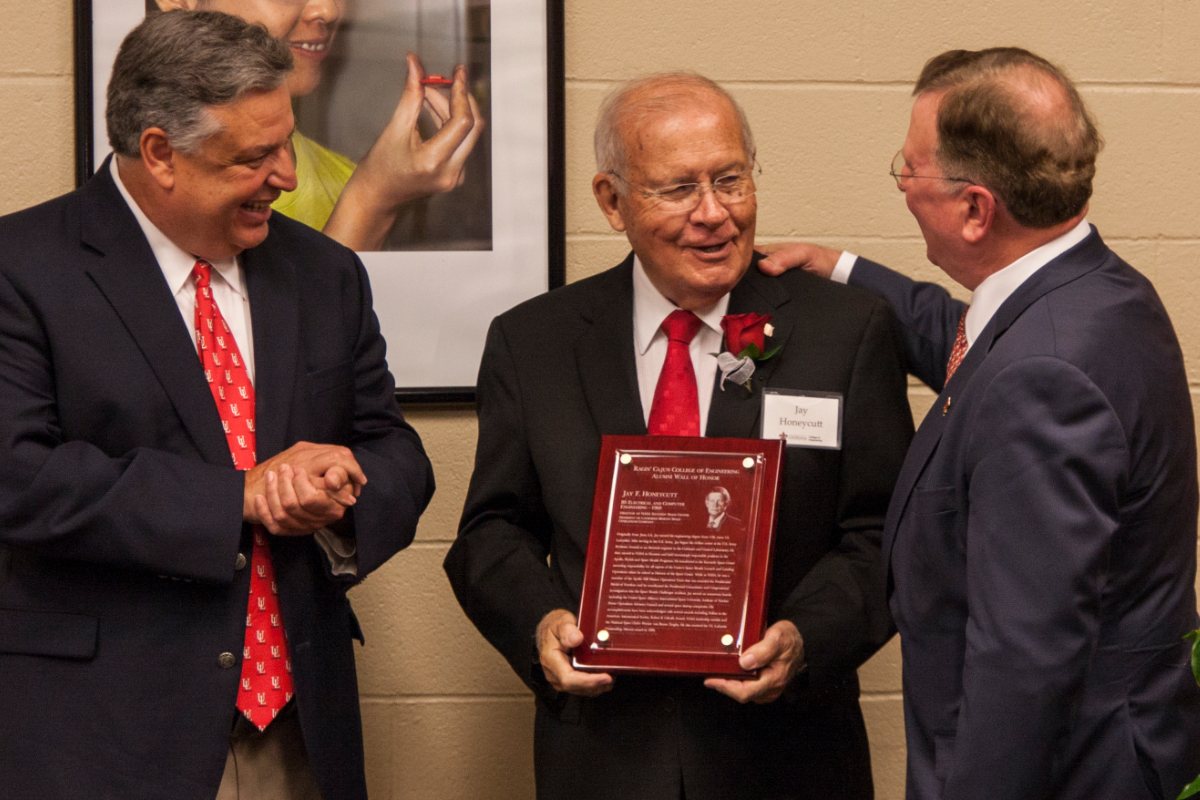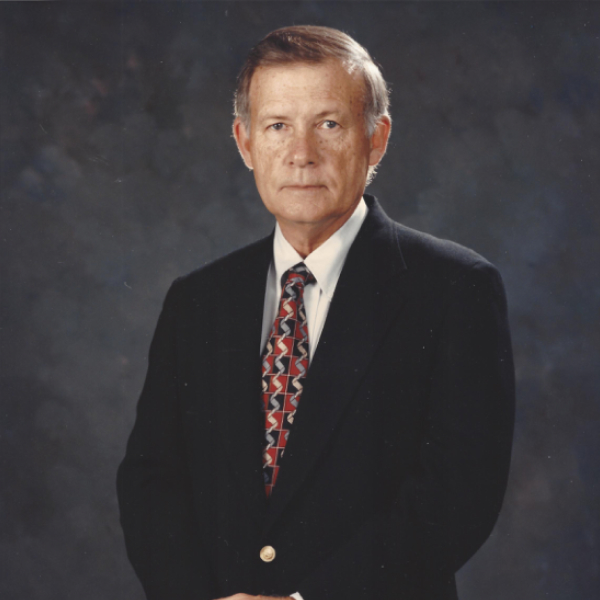Jay Honeycutt, ’60, had an outstanding career based on making the most out of every situation.
After a long career of working on the Apollo, Skylab, and Space Shuttle Programs with NASA, along with the Space Shuttle Launch and Landing Operations with the Kennedy Space Center, Jay has retired and leads a much slower paced life.
“I'm happy doing what I do,” he said. “I get up every morning with the idea that I don't have anywhere to go, and I got all day to get there.”
The Right Place at The Right Time
If he hadn’t been drafted into the U.S. Army, Jay expects he would have followed in his dad’s footsteps of working with CLECO, an electric power company headquartered in central Louisiana.
“I can't think of anything in my background that would chase me anywhere else,” he said. “I mean, it was great company. I liked it. I liked working and living in New Iberia.”
Being drafted was the first of many times in his career that Jay describes as “being in the right place at the right time.”
“I was fortunate to get drafted, actually — not very many people will say that,” he said. “But I got out of school at the same time that NASA was being formed from the Army Ballistic Missile Agency.”
When NASA was formed, engineers from the Army Ballistic Missile Agency had the opportunity to transfer. This left the Army with few working-level engineers and an opportunity opened up for Jay.
“So, their solution to that problem was to draft fresh-out engineers,” he said. “I was one of those who got drafted. And I was only one of, like, three working-level engineers in my group.
“When all the engineers left, the Army didn't stop sending work to the lab,” he explained. “And so, I got some assignments that my peers waited, in some cases, years to get the same amount of responsibility that I got — basically four months after I got out of school. So that turned out to be really fortunate, actually.”
When Jay decided his time was up in the Army, the NASA Space Center was opening in Houston, marking the next “right place, right time” moment in his career.
“They put me to work on the lunar module. This was in the middle of Gemini, so they hadn't begun to fly the Apollo vehicles yet,” he explained. “So, I started at the ground level of developing the mechanics for flying the lunar module. And again, in the group I was in, I was the only one that they had to give that job to, so I got to work on that.
“So, you know, I ended up being in the right place at the right time several different times,” he said.
Launching Shuttles in Operations Engineering
When Jay started with NASA, he also started in a new field of engineering.
“When I transferred down to Texas, I got out of the design side and got into operations,” he said. “Which I much more enjoyed than I did the design work.
“Design engineers design it, test engineers test it and verify that it meets the design, and then the operators use it,” he explained. “We sit on the console, look at the data that's coming in and ensure that we've maintained the operation of the hardware to the design criteria.
“And when something goes wrong, we attempt to – in real time, which is what makes operations most fun – figure out what has gone wrong and what you're going to do about it,” he said.
Jay played a role in about 135 shuttle launches, including all of the Apollo launches, the three Skylab launches, Apollo Soyuz, and the first 25 shuttle launches for the Challenger. Each launch was very labor-intensive and required a lot of people.
“I had 1,000 civil servants, and 6,000 or 7,000 contractors in my organization that were responsible for executing all the steps there are,” he said. “Over time, we reduced the number of labor hours down through efficiencies, we got it down into the order of 650,000 or 700,000 labor hours.
“It was a lot of work by a lot of people, and the lowest-level person in the organization had as equally important a job as I did,” he said. “Any one of them could make any mistake in that near million labor hours and it would cause us to not be able to launch or lose a vehicle during launch.
“So, people were cautioned, and they were reminded that if you made a mistake, tell us about it and we'll go fix it,” he said. “If you didn't tell us, and we found out about it later, you're out of here because every one of your jobs is important. Everything you do in that job is important.”
Training the Next Leaders in Engineering
Jay is passionate about being involved with the next leaders of the industry. He visited UL Lafayette earlier this year to discuss the CAPE-3 satellite, built by student researchers.

“This isn’t straightforward lab research based on what they’re learning in the classroom. They are applying what they learn. This sort of direct application – rather than just demonstrating principles – will benefit them greatly.”
Jay’s theory is that one particular trait makes a good leader in a high-risk industry.
“You got to be willing to be wrong,” he said.
Jay says that there are people who are “good leaders in 99 out of 100 traits but they're just not willing to make that final commitment.”
Jay also thinks leaders should know that there is usually more than one right way to do things.
“I always try to teach young people around me that, normally, there are about 10 ways to do something,” he said. “And normally, only one of them is really wrong. Eight of them may not be the way you would do it, but they're not wrong.
“(For) some people, you have to do it exactly like they want it done — or it's wrong,” he said. “And those aren't good people to work for. People don't enjoy being in a situation where they have no room to follow their own imagination to get to a solution.”
More About Jay Honeycutt
Among the significant awards Jay has earned are:
• Exceptional Service Medal, April 1974
• Special Achievement Award, February 1978 and July 1982
• NASA Outstanding Leadership Medal, February 1988 and April 1995
• NASA Exceptional Service Medal, December 1988
• NASA Equal Employment Opportunity Award, March 1993
• Meritorious Executive Presidential Rank Award, 1993
• Fellow in the American Astronautical Society
• Robert R. Gilruth Award
• National Space Club’s Werner von Braun Trophy
• UL Lafayette Outstanding Alumni Award in 1999



